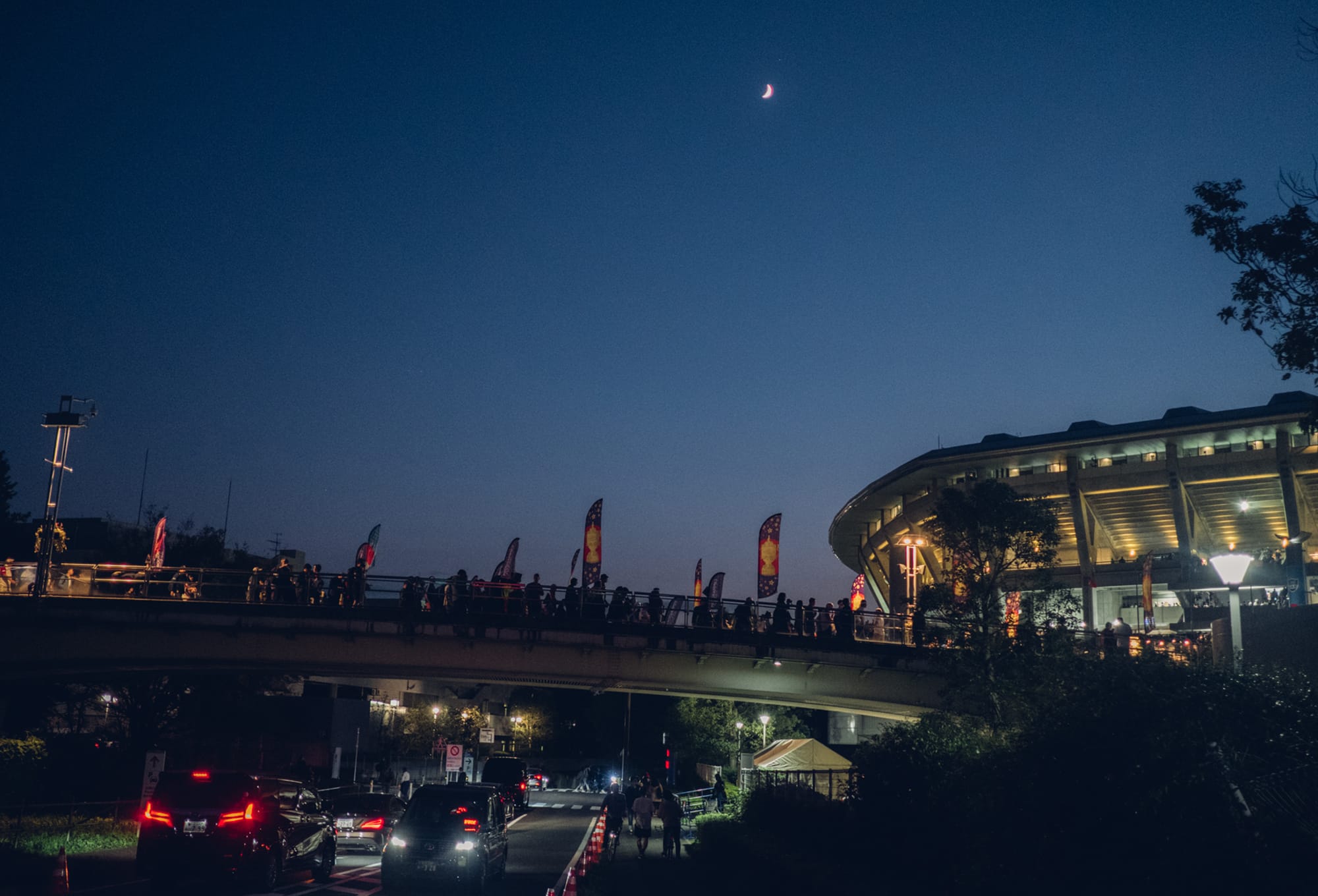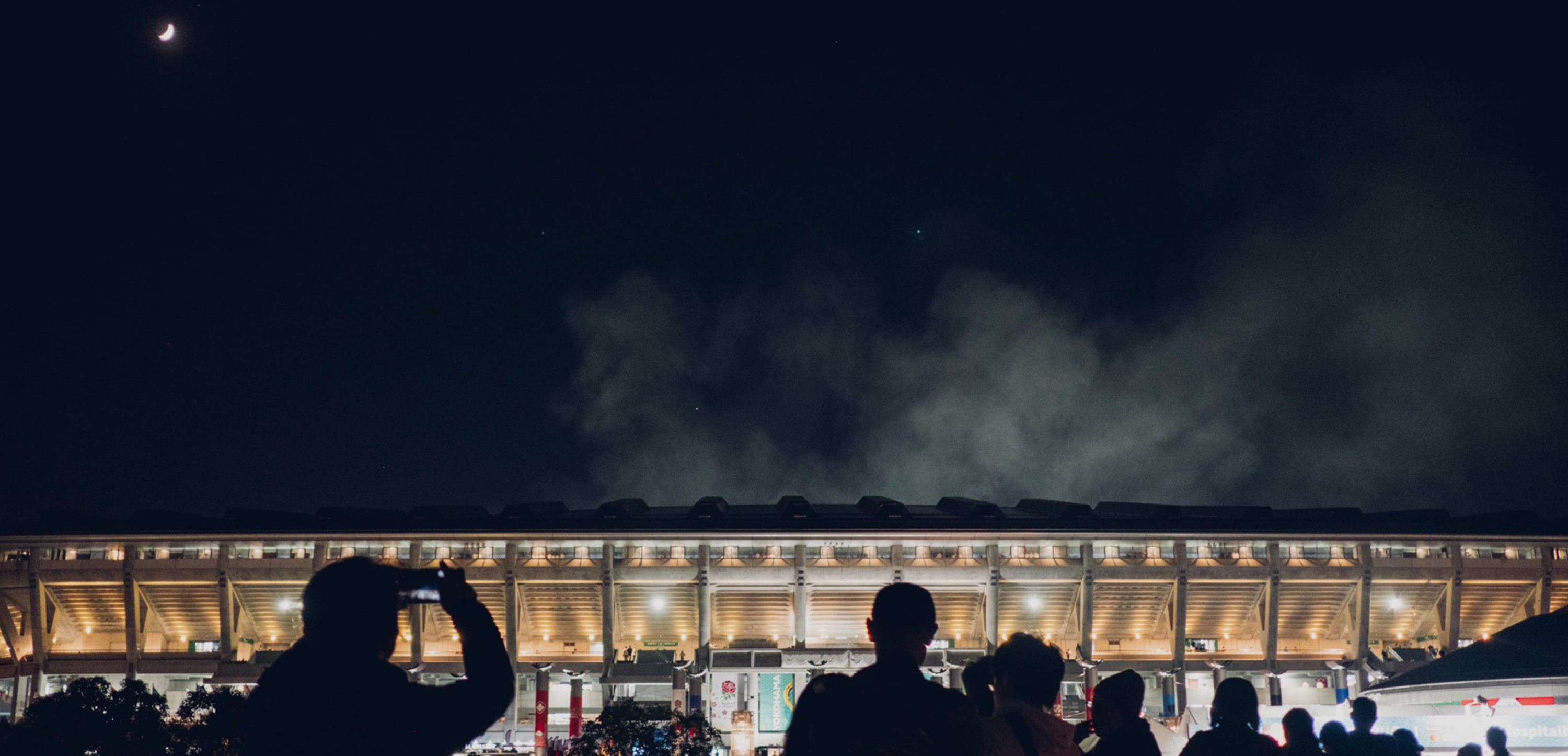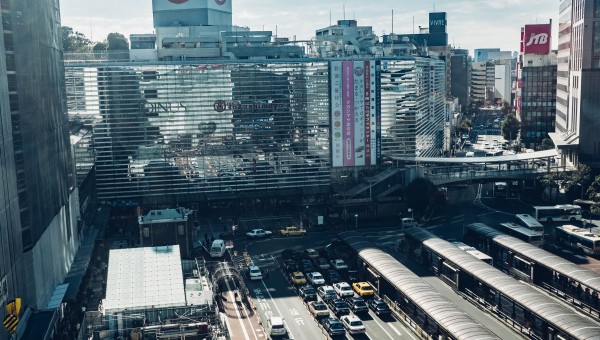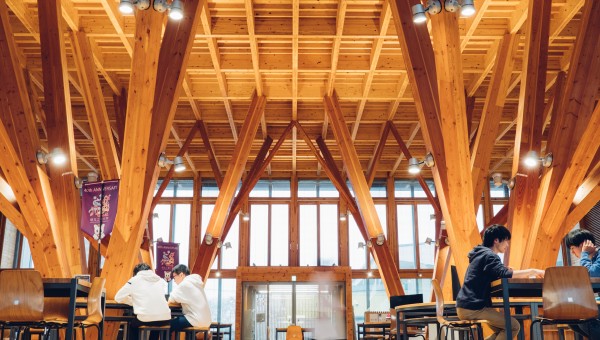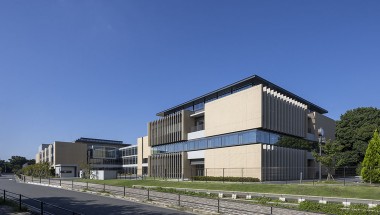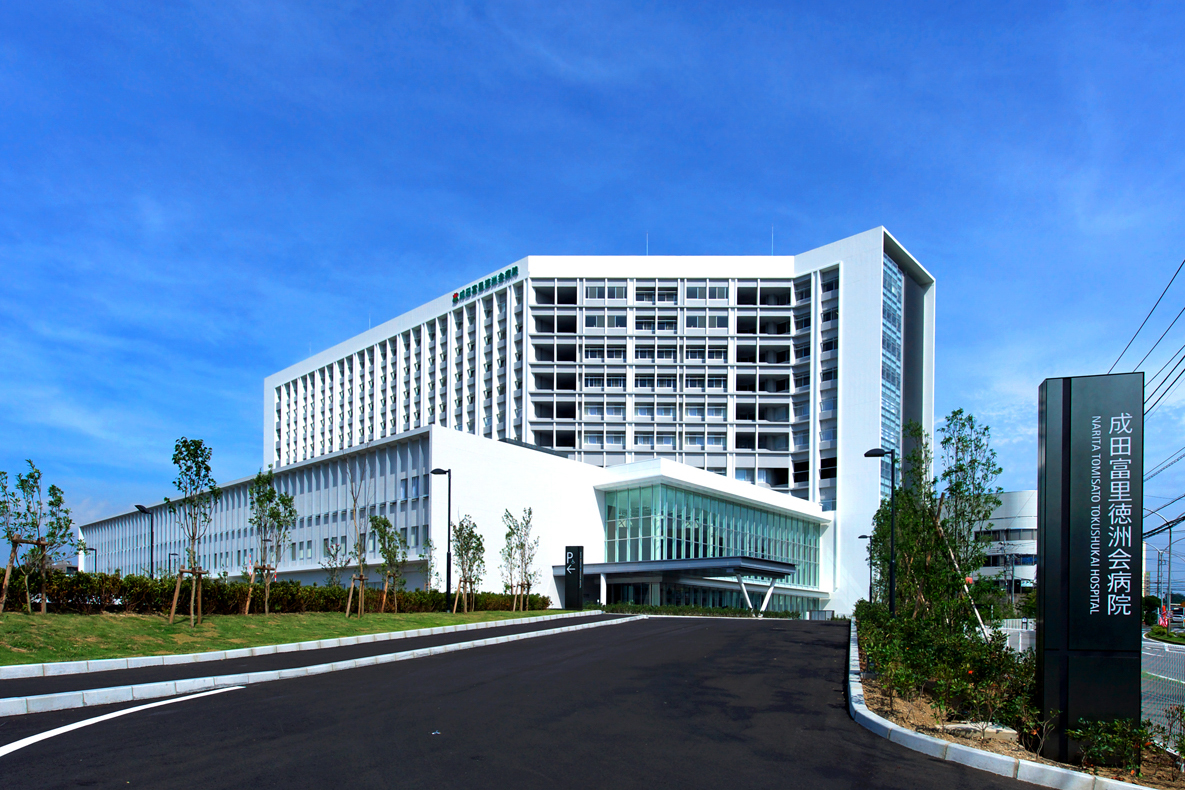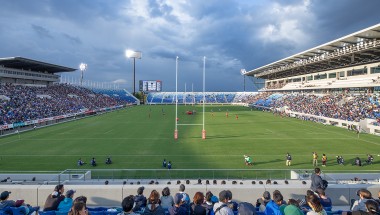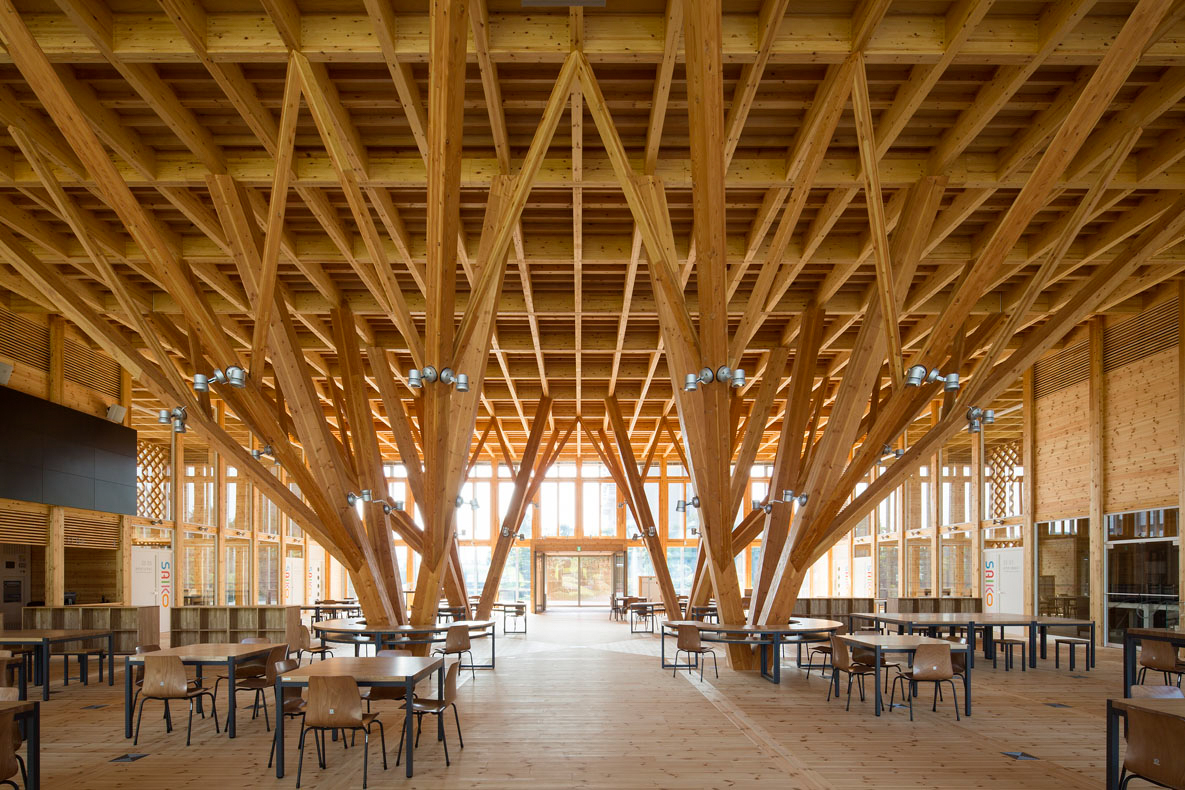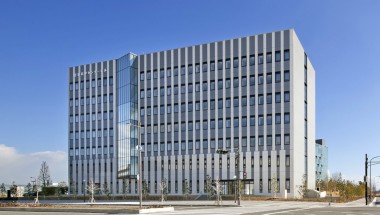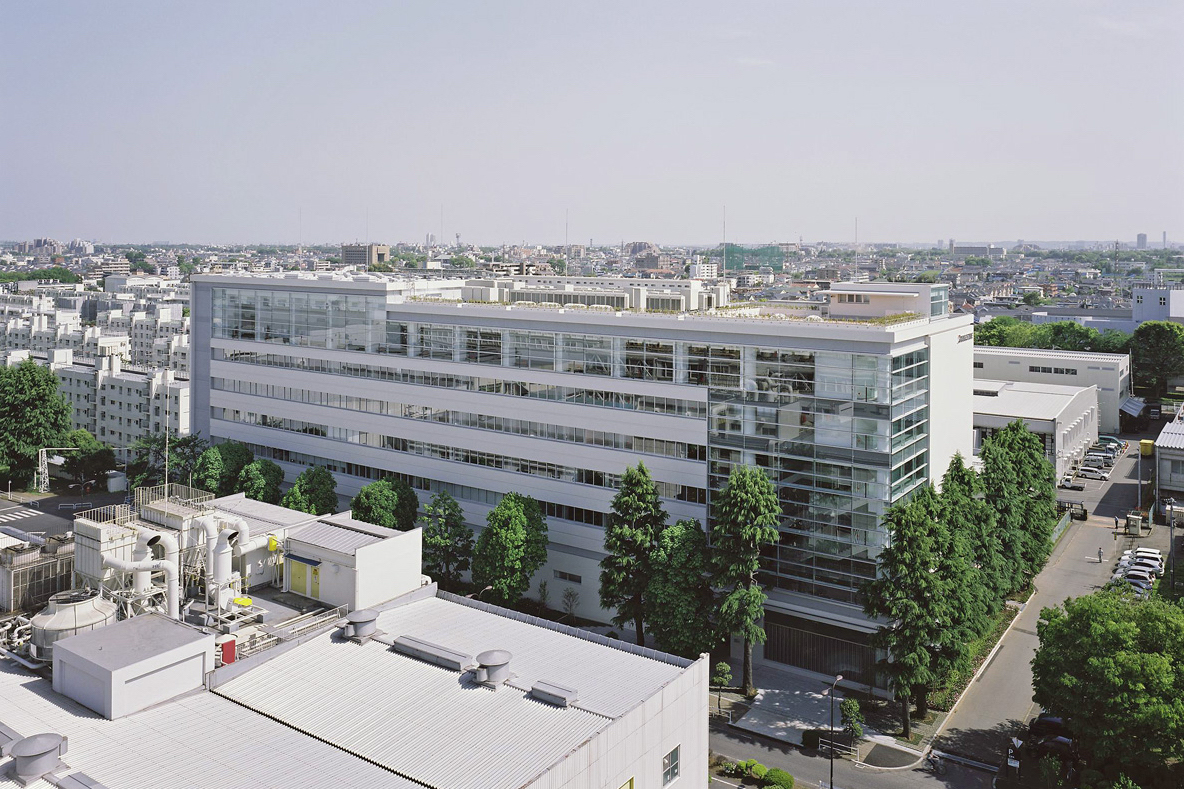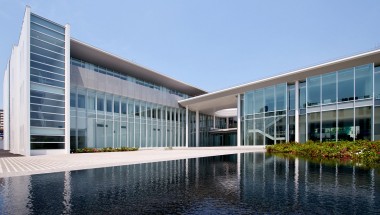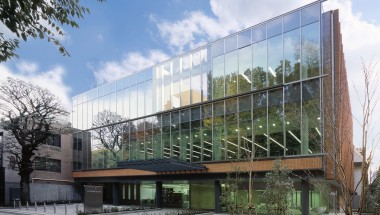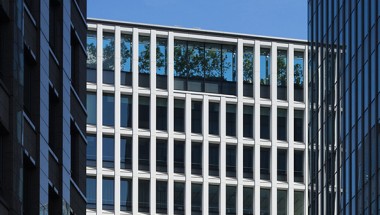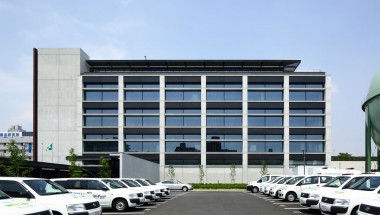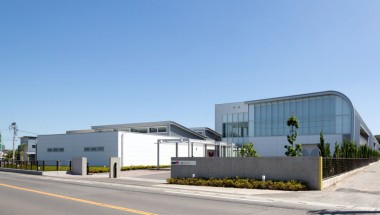What exactly is a stadium suitable for world-class rugby and soccer games?
Closing in on the current Yokohama International Stadium,
where the passion and zeal Japan's Rugby World Cup finals brought to over 70,000 fans still remain new to memory.

An impressive game demands a world-class stage.
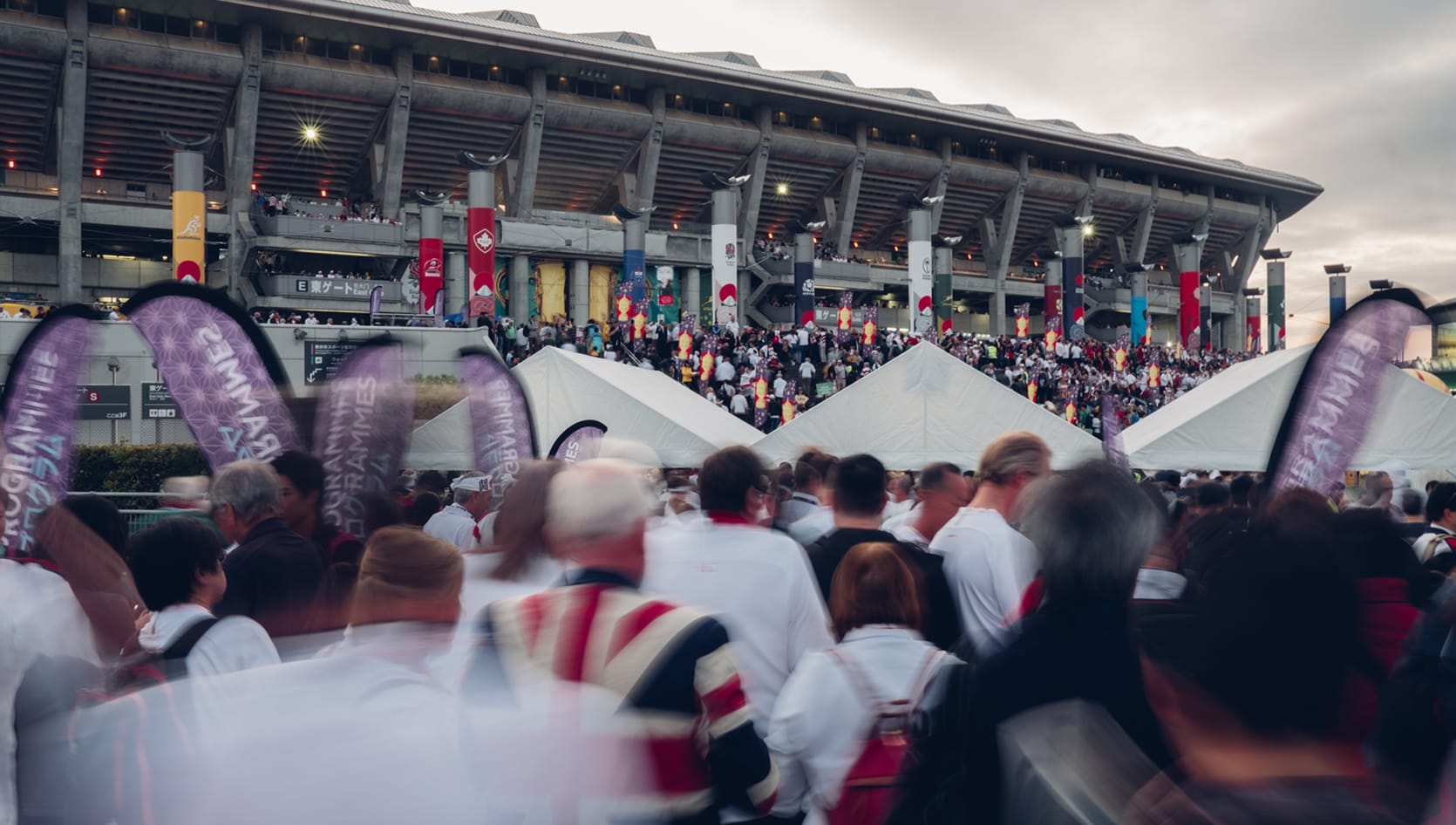
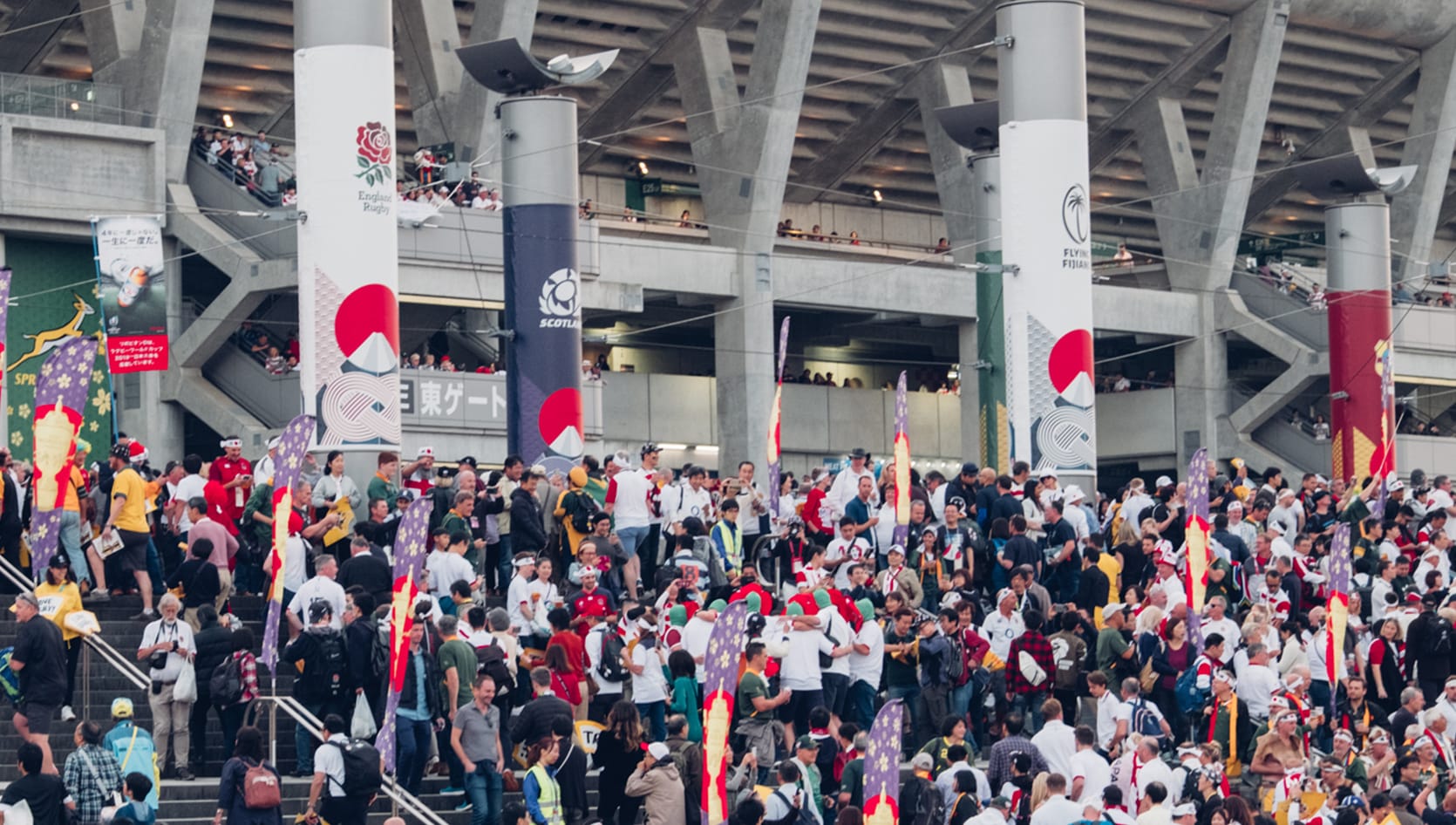
Inspired passion and zeal to over 70,000 rugby fans.
The Yokohama International Stadium was created for these two goals: to hold the Yokohama National Athletic Meet in 1997, and to be chosen as the venue for the 2002 FIFA World Cup. More than 20 years after its completion, it became the stage for the Rugby World Cup finals, which was held in Japan. The passion and excitement born there are still new to everyone’s memories.
The MHS Design Team researched rugby while working on the Yokohama International Stadium and the rugby-exclusive Kumagaya Rugby Ground, and supported this World Cup. A total of 10 games were held, with seven in the Yokohama International Stadium (including the finals) and three at the Kumagaya Rugby Ground. Over 70,000 rugby fans rushed to the Stadium, boiling with excitement to see the finals.
A raised-floor stadium where heavy rain has no effect.
Rivers were flooded all over Japan during the Rugby World Cup 2019 due to the heavy rains caused by Typhoon No. 19. This posed a threat to the match between Japan and Scotland to be held in the Yokohama International Stadium. This was no ordinary game for Japan, as it was its big chance to proceed to the finals for the first time.
However, the Stadium’s anti-flood pond next to the Tsurumi River, a river flowing through Kanagawa, prevented its flooding. It kept the region and basin safe, allowing the match to be held. This is the result of the Stadium’s unique trait of being set up on an artificial ground where the field is designed to act as an anti-flood pond. 940,000 cubic meters of water were said to be drawn beneath this raised-floor stadium, which is supported by more than a thousand pillars.
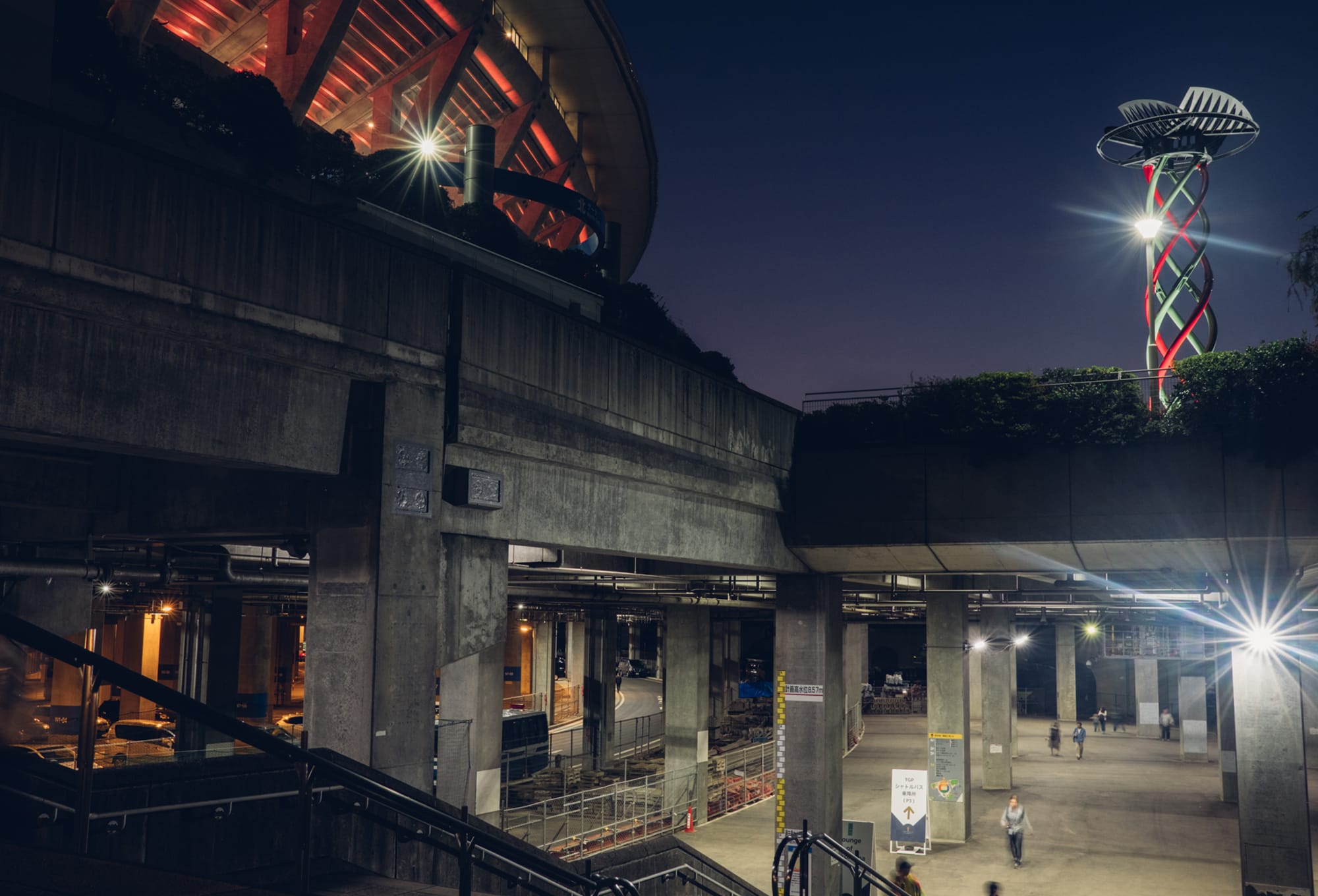
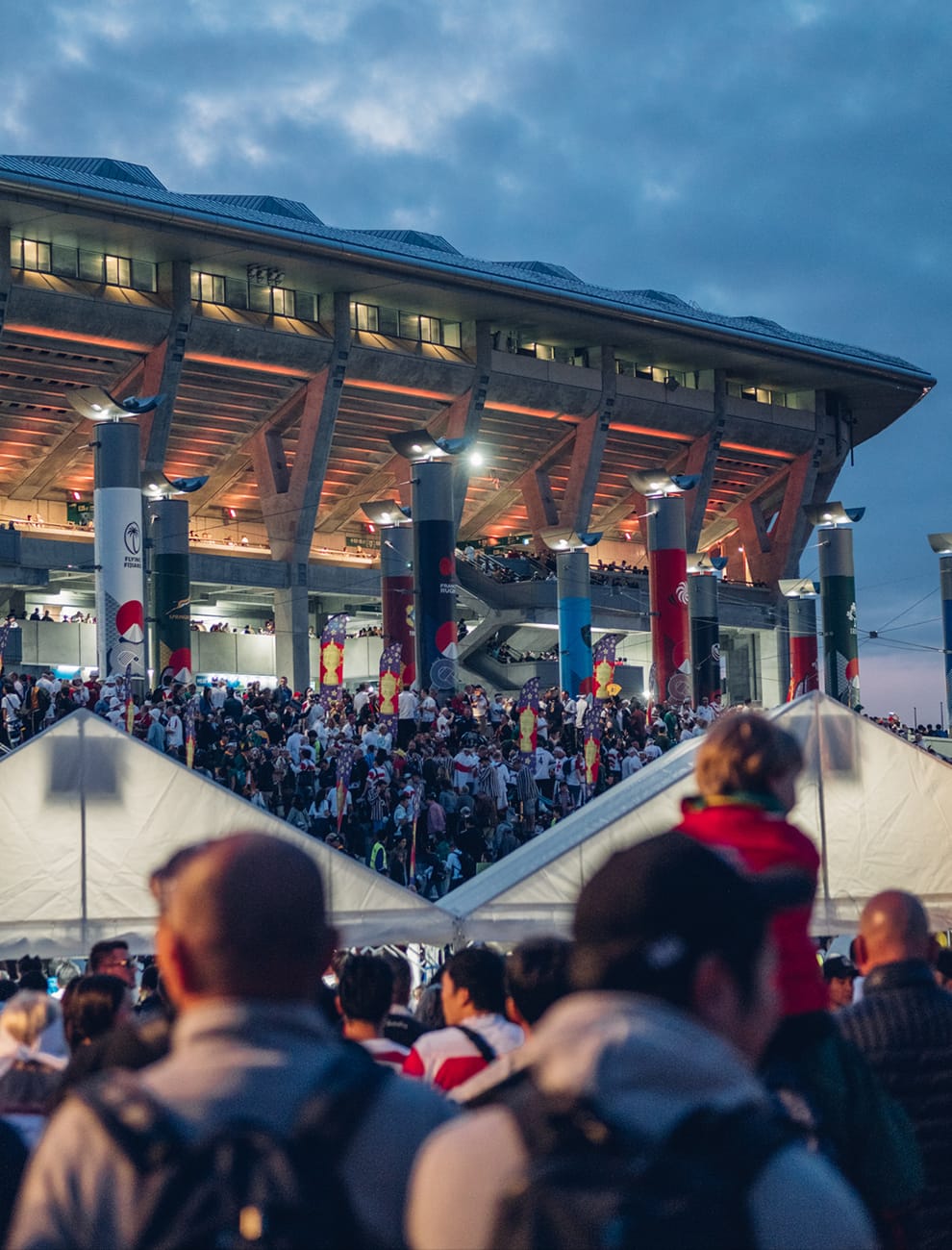
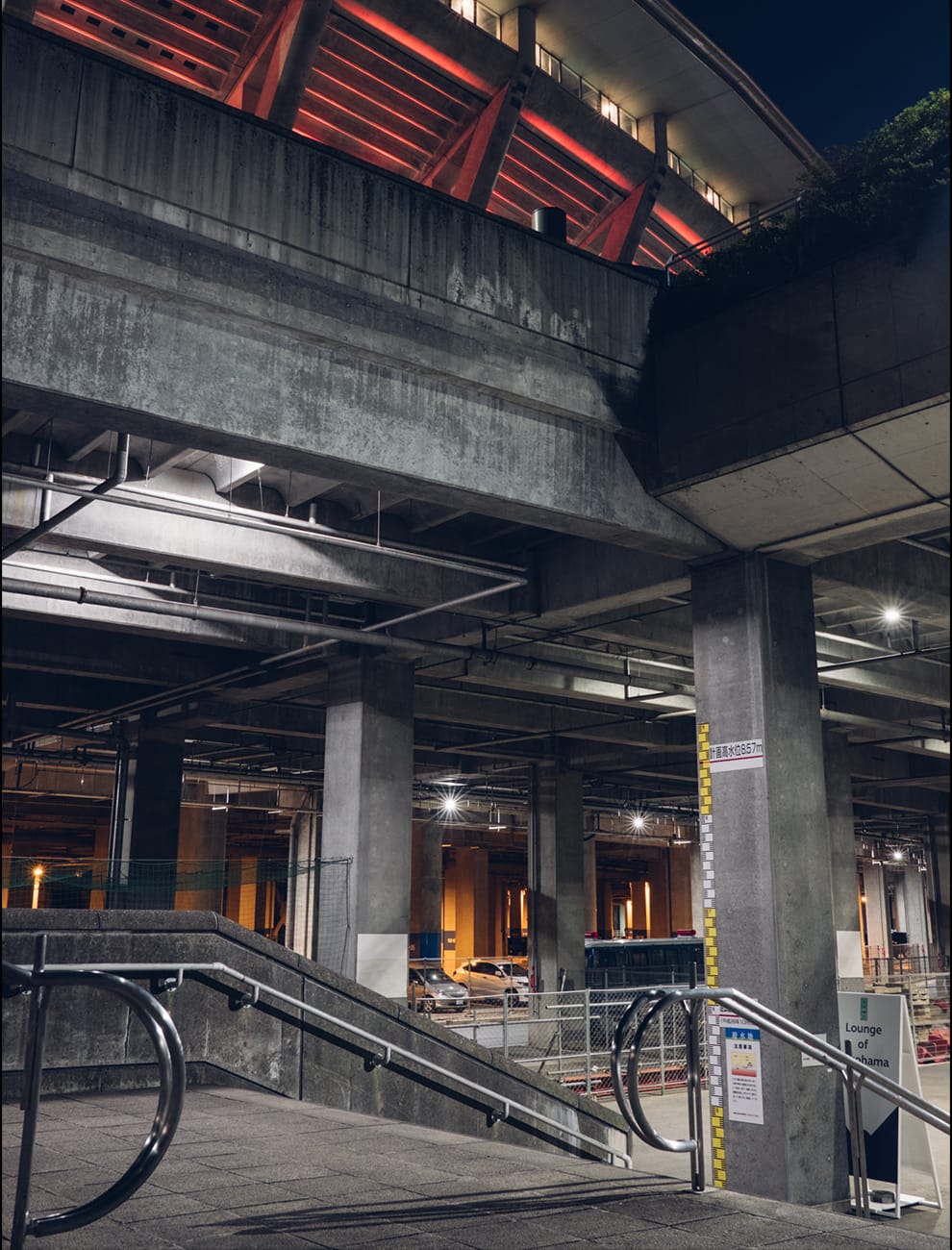
Equipment fit for the stage of the world’s first Triple Final.
The competitions’ regulations have significantly changed in the 20 years since the Stadium’s completion. However, we’re always working on renovations while keeping the users of the facility close. A recent case is our complete refurbishment of the lighting installation, switching them with Olympic-level lighting.
The Yokohama International Stadium is also holding the 2020 Tokyo Olympics’ men’s soccer finals, making it the stage for the world’s first Triple Final, compromising the finals for the Rugby World Cup, Soccer World Cup, and Olympics.
The Stadium is equipped with scale, dignity, and facilities fit for the finals, while the Kumagaya Rugby Ground brings forth the game’s ambiance up close. We are actively contributing to the development of the culture of rugby, as well as other sports through designing stadiums and other facilities, and have no plans on stopping.


